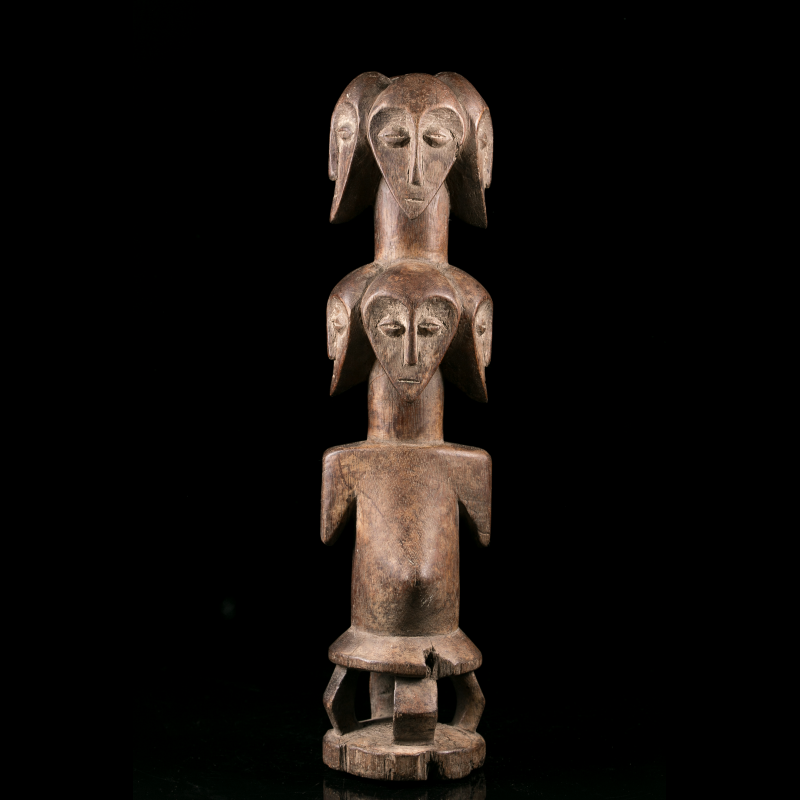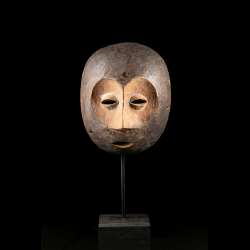











The Lega, formerly known as Warega, Swahili form of Balega, live in Maniema, on the edge of the Great Forest. They live in territories crossed by tributaries of the upper Zaire, to the west, and close to the great lakes, to the east.
Like all populations of the great forest, Lega society is of the segmental type, not possessing centralized power.
It is patrilineal and the marriage is virilocal. The extended family constitutes the effective economic group.
The elders of the patriclans possess a certain form of political authority, they are kindi, initiated at the highest grade of the Bwami initiatory society which governs the entire life of the Lega and for which all the objects that we know are made.
Jan Vansina (1966) writes that the bwami "was a veritable super-structure, which strengthened relationships within lineages and clans while providing ranks and titles full of prestige and symbols and formed systems of values and very rich ideology".
Eighty percent of the men were part of this institution. The majority of the ritual was public and took place in a hut located in the center of the village so that the initiate could gain prestige in the eyes of all.
Despite everything, if the bwami is not a secret society, it is a closed association because only initiates can participate in the ritual and the teaching. These have an esoteric character and secrecy surrounds the exercise of certain functions. Likewise, the ownership or custody of part of the initiatory objects was secret.
Data sheet
You might also like

The Lega, formerly known as Warega, Swahili form of Balega, live in Maniema, on the edge of the Great Forest. They live in territories crossed by tributaries of the upper Zaire, to the west, and close to the great lakes, to the east.
Like all populations of the great forest, Lega society is of the segmental type, not possessing centralized power.
It is patrilineal and the marriage is virilocal. The extended family constitutes the effective economic group.
The elders of the patriclans possess a certain form of political authority, they are kindi, initiated at the highest grade of the Bwami initiatory society which governs the entire life of the Lega and for which all the objects that we know are made.
Jan Vansina (1966) writes that the bwami "was a veritable super-structure, which strengthened relationships within lineages and clans while providing ranks and titles full of prestige and symbols and formed systems of values and very rich ideology".
Eighty percent of the men were part of this institution. The majority of the ritual was public and took place in a hut located in the center of the village so that the initiate could gain prestige in the eyes of all.
Despite everything, if the bwami is not a secret society, it is a closed association because only initiates can participate in the ritual and the teaching. These have an esoteric character and secrecy surrounds the exercise of certain functions. Likewise, the ownership or custody of part of the initiatory objects was secret.



